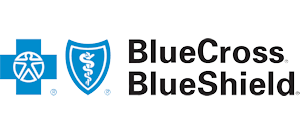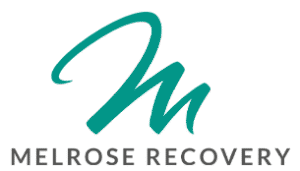Cannabinoid Hyperemesis Syndrome
Cannabinoid Hyperemesis Syndrome – Welcome to Melrose Recovery, your pathway to transformation and healing. Located in the vibrant heart of Los Angeles, California just moments away from iconic Hollywood and the picturesque beaches of Santa Monica and Venice, we are dedicated to changing lives. Since 2015, our comprehensive hyperemesis cannabinoid treatment approach encompasses detoxification, residential care, and aftercare services, all tailored to meet each individual’s unique needs on their recovery journey.
Led by a compassionate team of addiction professionals and counselors, we offer a range of therapy programs designed to support and guide individuals suffering hyperemesis cannabinoid syndrome toward lasting sobriety. At Melrose Recovery, we believe in the power of personalized care and diverse treatment options to pave the way for a brighter future.

Understanding Cannabinoid Hyperemesis Syndrome (CHS)
What Is CHS? – Cannabinoid Hyperemesis Syndrome
Cannabinoid Hyperemesis Syndrome (CHS) is a condition that affects individuals who use cannabis (also known as marijuana or weed). It is marked by severe, recurring episodes of nausea and vomiting. CHS is relatively rare and typically develops in long-term, frequent cannabis users. Research shows that about 32.9% of daily or near-daily users may meet the criteria for CHS.
How Cannabis Affects the Body – Cannabinoid Hyperemesis Syndrome
Cannabis contains several active compounds, the most well-known being THC (tetrahydrocannabinol), which binds to cannabinoid receptors in the brain to produce a euphoric “high.” These receptors are also found in the digestive system. Over time, regular cannabis use may alter how these receptors function, potentially triggering CHS symptoms.
CHS Symptoms: A Three-Phase Condition
-
Prodromal Phase
Early signs include nausea, abdominal discomfort, and occasional vomiting. This phase can last for months or even years.
-
Hyperemetic Phase
Symptoms worsen and include persistent vomiting, intense nausea, dehydration, stomach pain, reduced appetite, and weight loss. Many individuals find temporary relief through frequent hot showers or baths.
-
Recovery Phase
Once cannabis use is stopped, symptoms gradually resolve, and normal eating patterns return. However, symptoms will likely return if cannabis use resumes.
What Causes CHS?
The exact cause of CHS is still being studied. One theory suggests that long-term cannabis use alters the way the digestive system’s cannabinoid receptors respond, leading to dysfunction. Another hypothesis links CHS to overstimulation of the body’s endocannabinoid system.
Cannabinoid Hyperemesis Syndrome Risk Factors
-
Long-term cannabis use (often over a decade)
-
Frequent use (weekly or more)
-
Starting cannabis use in adolescence
Not everyone who uses cannabis will develop CHS, but those with these risk factors are more susceptible.
Cannabinoid Hyperemesis Syndrome Diagnosing CHS
There’s no single test for CHS. Diagnosis typically involves a review of symptoms and cannabis use history, including:
-
Frequency and duration of cannabis use
-
Nausea and vomiting patterns
-
Use of hot baths for symptom relief
-
Appetite changes and weight loss
To rule out other conditions like Cyclical Vomiting Syndrome (CVS), additional tests may include:
-
Urinalysis and bloodwork
-
Pregnancy test
-
Liver and pancreas function tests
-
Imaging studies (X-rays, CT scans, MRIs)
Cannabinoid Hyperemesis Syndrome (CHS ) Treatment Options
The only proven treatment for CHS is to stop using cannabis. Hot showers or baths may provide short-term relief, but this often leads to compulsive bathing behaviors without resolving the root cause.
Treating Cannabis Use Disorder (CUD) is essential and may involve:
-
Motivational Interviewing: Encourages change by addressing ambivalence about cannabis use.
-
Cognitive Behavioral Therapy (CBT): Helps reframe harmful thoughts and behaviors.
-
Contingency Management: Uses positive reinforcement to encourage abstinence.
-
12-Step Recovery Programs: Offer peer support and long-term guidance for maintaining sobriety.
Can Cannabinoid Hyperemesis Syndrome – CHS Be Prevented?
Yes. The only way to prevent CHS is to avoid cannabis use entirely. However, quitting cannabis can be difficult, especially for long-term users. Seeking professional help is highly recommended for those experiencing symptoms or struggling to stop.
Cannabinoid Hyperemesis Syndrome Support at Melrose Recovery
At Melrose Recovery, we offer personalized treatment for individuals dealing with cannabis use, including CHS. Our approach addresses both the physical and psychological aspects of substance use through therapy, education, and ongoing support.
If you or a loved one is experiencing symptoms of CHS or struggling with cannabis use, reach out to Melrose Recovery today for comprehensive, compassionate care.
Frequently Asked Questions About Cannabinoid Hyperemesis Syndrome
What is Cannabinoid Hyperemesis Syndrome (CHS)?
CHS is a condition characterized by recurrent episodes of severe nausea, vomiting, and abdominal pain in chronic cannabis users.
What causes CHS?
It is caused by long-term, frequent use of cannabis, although the exact mechanism is not fully understood.
Is CHS a common condition?
It is relatively rare but becoming more commonly recognized due to increased cannabis use.
Who is at risk of developing CHS?
People who use cannabis daily or frequently over several years are at higher risk.
Can someone develop CHS from occasional cannabis use?
It’s highly unlikely; CHS typically occurs in chronic, long-term users.
Symptoms and Signs
What are the main symptoms of CHS?
Recurrent nausea, vomiting, abdominal pain, and a compulsion to take hot showers or baths.
Why do hot showers help people with CHS?
The heat may temporarily affect the brain’s thermoregulatory or pain pathways, offering relief.
Is CHS associated with weight loss?
Yes, severe and repeated vomiting can lead to dehydration and significant weight loss.
Does CHS cause fever or diarrhea?
Fever is not typical; diarrhea may occur but is less common.
How is CHS different from cyclic vomiting syndrome (CVS)?
CVS is not linked to cannabis use, while CHS occurs in chronic cannabis users and often improves with cessation.
Diagnosis
How is CHS diagnosed?
Diagnosis is clinical, based on history of cannabis use and ruling out other causes of vomiting.
Are there lab tests to confirm CHS?
No specific test confirms CHS; labs are used to rule out other conditions.
What is the typical delay between cannabis use and CHS onset?
It can take years—often 1–5 years of regular use before symptoms appear.
Can imaging or endoscopy detect CHS?
No, but they may be used to exclude other gastrointestinal issues.
Is cannabis use always disclosed during diagnosis?
Not always—patients may withhold this information, which can delay diagnosis.
Treatment and Management
What is the most effective treatment for CHS?
Complete cessation of cannabis use is the only known cure.
Can medications help manage CHS symptoms?
Anti-nausea medications may offer temporary relief, but often aren’t very effective.
Are there any emergency treatments for CHS?
IV fluids for dehydration, antiemetics, and sometimes antipsychotics like haloperidol in acute episodes.
Does CHS go away on its own?
Symptoms may temporarily subside, but they typically recur without cannabis cessation.
How long does it take for symptoms to improve after stopping cannabis?
Usually within days to weeks, though full recovery may take longer.
Long-Term Outlook and Prevention
Can CHS return after quitting cannabis?
Not typically, unless cannabis use resumes.
Are certain cannabis strains more likely to cause CHS?
High-THC strains are more commonly implicated, but research is ongoing.
Can medical cannabis users get CHS?
Yes, even medical users can develop CHS if cannabis is used long-term and frequently.
Is CHS dangerous?
It can be, due to risk of dehydration, electrolyte imbalance, and kidney injury from repeated vomiting.
What should you do if you suspect CHS?
Seek medical attention, disclose cannabis use honestly, and consider discontinuing cannabis under medical supervision.
Don’t Wait to Look for a Drug Addiction Treatment Program
Health Insurance PPO Plans for Cannabinoid Hyperemesis Syndrome
PPO Plans for Melrose Recovery For Cannabinoid Hyperemesis Syndrome in Los Angeles, California
Finding effective treatment for drug and alcohol addiction is one of the most important steps in the recovery journey. For many individuals and families, navigating how to pay for rehab can be a major concern. Fortunately, Melrose Recovery, a leading addiction treatment center in Los Angeles, California, accepts a wide range of PPO (Preferred Provider Organization) health insurance plans, making high-quality care more accessible and affordable.
Why Choose Melrose Recovery?
Melrose Recovery offers a structured and supportive environment for individuals seeking recovery from substance use disorders. Their programs include:
-
Medical Detox
-
Residential Inpatient Treatment
-
Dual Diagnosis Treatment
-
Individual and Group Therapy
-
Aftercare Planning
What sets Melrose apart is their client-centered approach, experienced clinical team, and commitment to long-term recovery. Located in Los Angeles, the facility provides a safe and comfortable setting to begin healing.
What Are PPO Insurance Plans?
PPO insurance plans allow policyholders to see healthcare providers both inside and outside of their insurance network, usually without a referral. When it comes to addiction treatment, this flexibility can be vital.
Key PPO benefits for rehab coverage:
-
Out-of-network options: You can still receive coverage for facilities not directly in your provider’s network.
-
No referral needed: You don’t need a referral from a primary care physician to start treatment.
-
More provider choices: PPO plans give you more freedom to choose the rehab facility that fits your needs.
Does Melrose Recovery Accept My PPO Insurance?
Melrose Recovery works with most major PPO insurance providers, including but not limited to:
- Aetna
- AmeriHealth
- Anthem
- Blue Cross Blue Shield
- Cigna
- Hawaii Medical Service Association (HMSA)
- Humana
- Kaiser Permanente
- Medical Mutual
- Premera Blue Cross
- UnitedHealthcare
Melrose Recovery’s admissions team is available 24 hours a day 714-442-7782 to verify your insurance benefits quickly and confidentially. This process helps determine your coverage, deductible, co-pays, and out-of-pocket maximums before starting treatment.
Verifying Insurance Coverage
To find out if your PPO insurance plan covers treatment at Melrose Recovery:
-
Call Melrose Recovery directly – Speak with an admissions specialist who can walk you through the insurance verification process.
-
Submit insurance info online – Many treatment centers, including Melrose, offer a secure online form for quick verification.
-
Check with your insurer – You can also contact your insurance company directly and ask about your behavioral health benefits.
The Importance of Getting Help
Addiction is a chronic and progressive condition—but with the right support, recovery is absolutely possible. By accepting a variety of PPO plans, Melrose Recovery helps reduce financial barriers to care, so individuals and families can focus on healing rather than costs.
Take the First Step Today
If you or a loved one is struggling with addiction, don’t wait. Melrose Recovery in Los Angeles offers compassionate, evidence-based care in a supportive setting. With PPO insurance coverage, treatment may be more affordable than you think.
Contact Melrose Recovery today to learn more about admissions and insurance verification. Your path to recovery can start now.





Get In Touch
info@melroserecovery.com
501 North Mariposa Ave, Los Angeles, CA 90004



